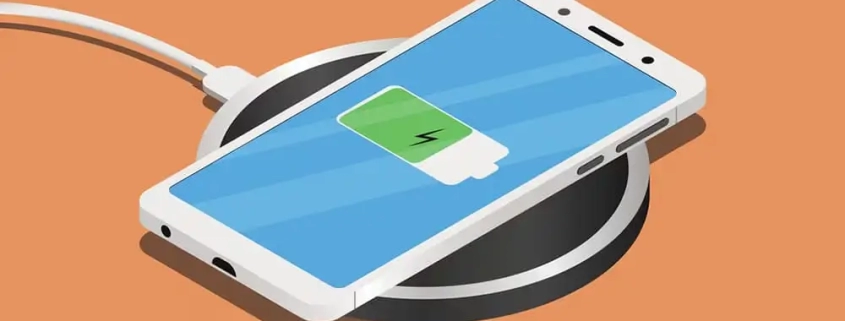Wireless charging has become a common feature in many modern devices, from smartphones to wearables, and even electric vehicles. This innovative technology offers a new way to power up your devices without the need to physically plug them in. Over the past few years, wireless charging has gained significant traction, thanks to its convenience and ease of use. As it evolves, more devices are incorporating wireless charging, making it a mainstream charging solution for tech enthusiasts and everyday users alike.
How Wireless Charging Works
Wireless charging relies on the principle of electromagnetic induction, where energy is transferred wirelessly between two coils—one in the charging pad (the transmitter) and one in the device (the receiver). When you place your device on the charging pad, an electric current flows through the transmitter coil, generating an electromagnetic field. This field induces a current in the receiver coil inside your device, which is then converted into usable power to charge the battery. The process happens automatically when the device is aligned with the charging pad.
Modern wireless chargers, particularly those using the Qi standard, often include communication between the charging pad and the device. This ensures efficient power transfer, adjusting the output based on the device’s charge level. Though wireless charging offers great convenience, it’s generally
slower than wired charging, mainly due to energy losses as heat. For this reason, some charging pads include cooling mechanisms to improve efficiency and prevent overheating. Proper alignment between the device and charger is key to maximizing charging speed and effectiveness.
Types of Wireless Charging
Wireless charging technology isn’t one-size-fits-all; there are several types, each with its own unique characteristics and uses:
Inductive Charging Inductive charging is the most common wireless charging method, used by smartphones and many other devices. It works through magnetic induction, where a charging pad generates a magnetic field that induces a current in the receiver coil of the device. The device must be placed directly on the pad, with the coils aligned, for efficient charging. While reliable, it tends to be slower compared to wired charging due to the energy loss and the need for close proximity between the pad and the device.
Resonant Charging Resonant charging is an advanced version of inductive charging that allows for energy transfer over slightly longer distances. By tuning both the transmitter and receiver coils to resonate at the same frequency, this method provides more flexibility in device placement. It’s ideal for multi-device charging stations, as it doesn’t require precise alignment. Some newer devices use resonant charging to offer more convenient and versatile charging experiences.
Radio Frequency (RF) Charging RF charging uses radio waves to transmit power to devices over greater distances, allowing for charging without direct contact. This method is still emerging but could be a game-changer for smaller devices like wearables or IoT sensors. RF charging doesn’t require the device to be close to the charger, making it perfect for devices in hard-to-reach places. Though still in development, RF charging offers the promise of a truly wireless charging experience in the future.
Benefits of Wireless Charging
Wireless charging offers several compelling advantages over traditional wired charging:
-
Convenience: One of the biggest benefits is convenience. No more fiddling with tangled cords or plugging and unplugging cables. Simply place your device on the charging pad, and you’re good to go.
-
Reduced Wear and Tear: With wireless charging, there’s no need to repeatedly plug and unplug cables, which can cause wear on both the device’s charging port and the cable itself. Over time, this can extend the lifespan of your devices.
-
Universal Compatibility: Many wireless chargers are designed to work with a wide range of devices. If you have a phone, smartwatch, or earbuds that support wireless charging, one pad can serve multiple purposes. This universal compatibility reduces the clutter of charging cables for each individual device.
-
Safety: Wireless charging eliminates the risk of short circuits caused by damaged cables. Since there’s no physical connection between the charger and the device, the chances of electrical accidents or damage are minimized.
Wireless Charging for Electric Vehicles
Wireless charging isn’t just limited to smartphones or wearables. The concept is also making its way into the electric vehicle (EV) market. Wireless EV charging uses similar principles but is designed to power up cars without the need for physical connectors. Instead, the car is equipped with a receiver, and the charging station transmits power through an electromagnetic field.
This technology could revolutionize how we charge our electric cars, eliminating the need for drivers to plug in their vehicles. The convenience of simply parking over a charging pad is an attractive feature. Though still in the experimental stage in many places, wireless charging for EVs could soon become a mainstream solution as the technology matures.
Conclusión
Wireless charging has already begun to change the way we charge our devices, offering unparalleled convenience and compatibility. While there are still challenges to overcome—such as slower charging speeds and efficiency concerns—the technology continues to evolve rapidly. With ongoing advancements, wireless charging is poised to become even faster, more efficient, and more widely adopted across both personal devices and electric vehicles. Whether it’s powering up your phone or your car, wireless charging offers a glimpse into a future where cables could become a thing of the past.
 1
1
 0
0
 4736
4736
 1
1
 0
0
 4736
4736












Deja una respuesta
Su dirección de correo electrónico no será publicada. Los campos obligatorios están marcados *